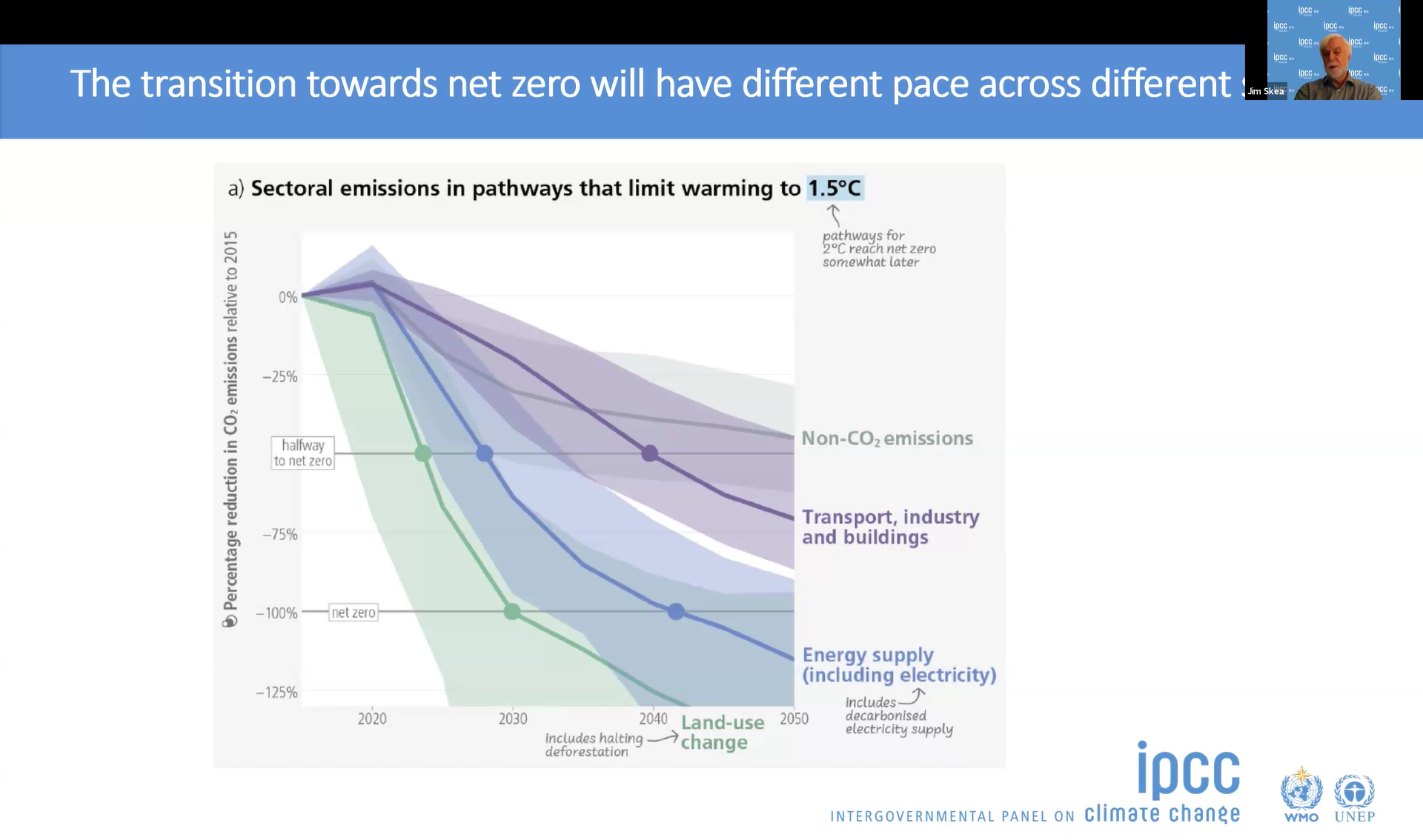Monday, 05 February, 2024
As part of our ‘‘WEC Mondays-Guest Speaker Series’’ we hosted Jim Skea, Chair of the Intergovernmental Panel on Climate Change (IPCC).
In Professor Skea’s presentation on ‘‘Key energy findings from the IPCC Sixth Assessment Cycle and plans for the Seventh Assessment Cycle’’, Professor Skea highlighted:

- The potential impacts of climate change necessitated the need for ambitious climate goals worldwide. If we carry on with current policy, we are headed towards global warming of about 3°C by the end of this century. In contrast, if we were to honor ‘‘The Paris Agreement’’, global warming should be kept within the range of 1.5°C -2°C.
- Future climate change is projected to increase the severity of impacts and will increase regional differences. The direct result of global warming had not only exacerbated the loss of biodiversity and the risk of species losses, but maize and fishery yields regressed drastically as well.
- The risks of climate change differ by system. While the coastal ecosystems seem to have a higher threshold for temperature rise compared to land-based ecosystems, the impacts are devastating in both cases, nonetheless. For instance, the average global temperature of 1°C -1.5°C signals an increase in the length of fire season, we observe 70-90% of warm water coral reefs decline under the same global average temperature.
- Greenhouse gas (GHG) emissions resulting from human activities unequivocally caused global warming and continue to do so. Between 1990-2020, we observed 1-2% increase in greenhouse gas emissions per year over the last 3 decades, except for 2020. Greenhouse gas emissions reached record high in 2023. However, the emissions from the developed economies in North America and in Europe have started to decline in recent years, which didn’t radically affect the total global emissions, since Eastern Asia had been emitting more greenhouse gases.
- CO2 is long-lived. There is a quasi-linear relationship between cumulative CO2 emissions and global warming. With historical emissions have already been put in the atmosphere since the industrial era, the remaining carbon budgets to limit the global warming to 1.5°C could soon be exhausted, while those for 2°C had already been largely depleted.
- Emissions are distributed unevenly, both in the present day and cumulatively since 1850. While North America and Europe are responsible for 40% of historic emissions, whereas Africa and Southern Asia combined account for just over 10%. Moreover, net anthropogenic greenhouse gas emissions per capita today also reflect a similar picture where North America and Europe’s greenhouse gas emissions per capita are 4-5 times higher than that of Africa and Southern Asia.
- The transition towards net zero will have a different pace across different sectors. The first sector which is expected to reach net zero will be in land use/land use change due to forestation and avoided deforestation. The second sector to achieve net zero will be energy supply mainly due to electrification. The transport, industry and buildings will probably be the last sectors to achieve net zero, since transforming the existing infrastructure is costly and challenging. Moreover, Direct air capture and carbon storage and utilization is mainly limited to CO2 at the present time, and technology related to capture other greenhouse gas emissions is still at its infancy.
- The range of demand-side GHG emission reduction potential by 2050 is 40-70% in end-use sectors. However, this can only be achieved if the end-users have the right infrastructure and technology available for them to make greener and more energy efficient choices.
- Carbon Dioxide removal can counterbalance hard-to-eliminate emissions. Given the emphasis on net zero, current removal method is largely limited to improved forest management and afforestation. However, there are other biological and geochemical ways of removing CO2 from the air that are not practiced at a large scale.
- Higher mitigation investment flows are required for all sectors and regions to limit global warming. Current investment flows need a 6-fold increase among all sectors in order to limit global warming to 2°C or below. Specifically, the highest investment gap exists in the transport and agriculture sectors where the current funding needs to increase by at least 7 and 10 times respectively in order to limit global warming to 2°C.
